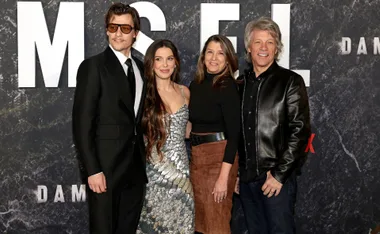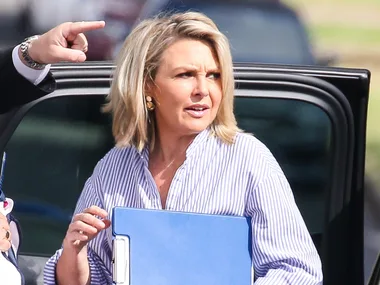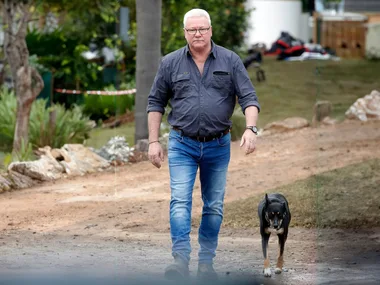One in five people will experience depression in their lifetime. It can be anything from a serious depressive period that lasts at least two weeks (major depression) to a less severe low mood that lasts for years (dysthymia).
It can run in families, but difficult life circumstances are more likely to bring on a bout. Medical problems can also be to blame, such as low thyroid function, anaemia, chronic pain and brain injuries, as can certain personality traits, such as being a worrier or perfectionist, negative or self-critical.
Mood swings, irritability, frustration, loss of interest in life, sleeplessness, alcohol or drug misuse, staying home a lot, poor physical health, an inability to take criticism. ”The way to determine if someone is experiencing depression rather than simply having a bad day is the severity of their symptoms,” says Associate Professor Michael Baigent, clinical advisor to Beyond Blue, the national depression initiative (www.beyondblue.com.au).
”If they are persistently depressed and it’s affecting how they function in daily life, they’re having suicidal thoughts, feeling down for longer than two weeks, or having severe mood swings, they could need professional help.”
Reduce stress levels – relaxation techniques, plenty of sleep and cutting down on alcohol can help. Continue to socialise, even if you don’t feel like it, and stay active – research shows regular exercise significantly reduces the risk of developing depression.
Don’t avoid someone with depression. They need to stay socially active and simply spending time with them can show you care. Be ready to listen – not judge – when they want to talk.
Related video:
Page 2
Formerly known as manic depression, bipolar disorder sufferers experience extreme highs – periods of mania – followed by crushing lows that don’t relate to what’s going on in their life. “We think there’s a biological cause behind it, but it’s an oversimplification to say it’s simply a chemical imbalance,” says Prof Baigent.
Bipolar disorder can manifest in extreme opposites – high/low energy levels, rapid/slow thoughts and actions, inactivity/overactivity. Symptoms can also include irritability, inappropriate behaviour due to impaired judgement, sleeplessness, hallucinations, and withdrawing from friends and family. Bipolar disorder ”Most people will have an episode of mania, recover, then lapse into depression, recover, then experience mania again,” says Prof Baigent. ”The average number of mania episodes in a lifetime is about eight. In between the different bouts a person will be their normal self.”
Stress in personal relationships is a common trigger for bipolar disorder, so talk through problems. Try to strike a balance – make time for enjoyable activities, and don’t let work rule your life. Look after yourself with a good diet, and plenty of sleep and exercise.
“You’re never really cured of bipolar, but you can go through long periods without having an episode – just as you can have asthma without having an attack,” says Prof Dr Baigent. “Some people take medications long-term to prevent an attack; others prefer to handle it by looking after themselves and monitoring their situation.”
If they want to talk, listen, and show you understand why they might feel that way. When you are talking, maintain eye contact, create a comfortable atmosphere, and use open-ended questions to encourage conversation. If they get angry, don’t get angry back.
Related video:
Page 3
The type of depression some women get between a month and up to a year after giving birth. Around 16 per cent of mums in Australia will experience PND. It is different to the ‘baby blues’ – when hormonal changes leave a woman feeling tearful and overwhelmed between three and 10 days after giving birth (around 80 per cent of women experience this).
”PND is biological (if you had it with your first child you’re more likely to have it with your second) and circumstantial (having a baby is a significant, life-changing event),” says Prof Baigent.
A lack of confidence, negative thoughts, feelings of inadequacy, guilt and being unable to cope, trouble sleeping, loss of appetite and memory, feeling that life is meaningless and a tendency to withdraw from everyone, including the baby.
Do things you enjoy, even if it’s just reading a book. Ask others to mind the baby to give you a break, and don’t feel bad for restricting visitors. Although you might not feel like reaching out, making a connection with others can really help, especially other mums experiencing PND.
Don’t bottle things up from your partner, eat right, stay active, even if it’s only pushing the pram around the block, and nap whenever you can – sleep is very important.
Be there to listen and offer support. And don’t underestimate the value of practical things like babysitting, doing the laundry or cooking dinner. Remember the woman’s partner might need help too.
Related video:
Related video:
Related video:
Page 4
It’s thought to be a chemical imbalance in the hypothalamus portion of the brain, which occurs due to a lack of exposure to sunlight – cases in people living within 30 degrees of the equator are rare.
A lack of sunlight can cause a drop in melatonin, a hormone that plays a role in sleep patterns and mood, and serotonin, a neurotransmitter that affects mood.
Depression, hopelessness, oversleeping, lethargy, over-eating, a loss of concentration, libido and energy, anxiety, mood swings, problems socialising and a weakened immune system.
Make your environment brighter – open blinds and trim trees back from windows. Sit closer to windows at home and work. Get more sunlight on your skin – take a walk at lunchtime, exercise outside or simply sit on a bench in the sun.
Even if it’s cloudy, outdoor light can help. If nothing works, try a light box. These high-intensity, full-spectrum devices mimic outdoor light and fool your brain into thinking you’ve been in the sun, thus causing a change in brain chemicals.
If you’ve noticed a friend seems exceptionally down during the winter months and there’s no real reason why, tell them about SAD and help them find out more.
Related video:
Newsletter conversion description. Get the latest in your inbox.









































.jpg?resize=380%2C285)












